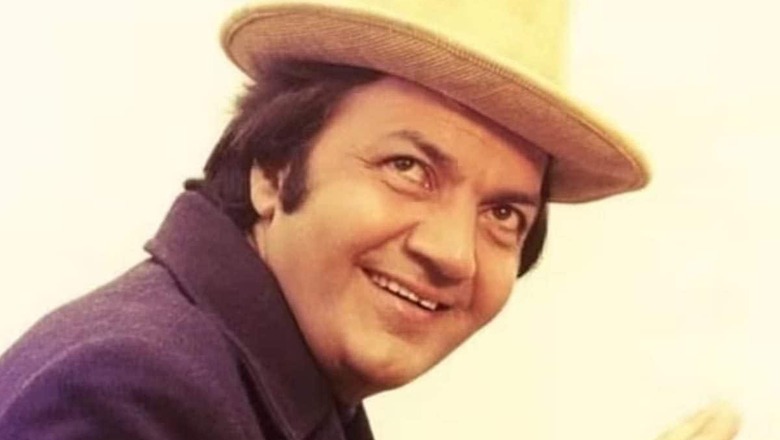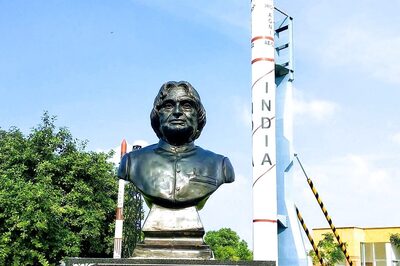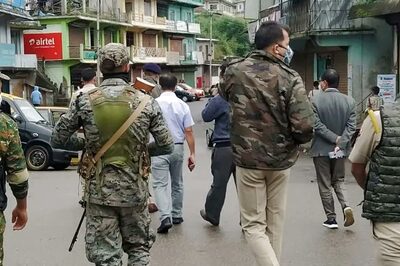
views
In the early 1960s, the movie noir of the 1950s was replaced by breezy musical romances. Fresh young faces like Joy Mukherjee, Biswajit, Shammi Kapoor and Manoj Kumar were singing their way into the ladies’ hearts. The villain in these films was usually a competing suitor for the girl’s hand, an example being the scheming Shyam (Pran) in Mere Sanam (1965) who convinces the heroine Nina’s mother of his candidature as a worthy groom for Nina. However, in the mid-1960s there was a drought of smart young men to play the youngster villain. KN Singh, Jayant, Madan Puri, Jeevan, Janki Das and Kanhaiyalal were all north of 50. Anwar Hussain and Ajit essayed villain and characters roles competently but could not break the glass ceiling called Pran. Mehmood, after playing the murderer in C.I.D (1956) got whisked away into the comedy genre. And so, it was Pran or nothing.
A young man employed with the Times of India (but whose heart lay in acting) was noticed in a Bombay suburban train and was offered a role in a Punjabi film Chaudhary Karnail Singh (1960). His name was Prem Chopra. Mehboob Khan’s proposed project in which Prem was promised an ‘important role’ got shelved. Instead, what came along was a role in Raj Khosla’s suspense film Woh Kaun Thi? (1964).
In this film, the story of which was partly inspired by William ‘Wilkie’ Collins’s 1959 novel The Woman in White, Prem Chopra played Dr Ramesh, a close friend and cousin of the hero, Dr Anand (Manoj Kumar), who schemes to prove Dr Anand insane so that the family property could be passed on to the next legal claimant — Dr Ramesh himself. The universe conspired to act in the best interest of Prem Chopra and the industry. Woh Kaun Thi? took off like a rocket while Kunwari (1966) and a couple of other films with him in the lead didn’t do well. And Prem Chopra slotted in with a sharp click into the vacant slot of the handsome young, urbane villain that filmdom was hunting for.
Having acted in English language plays, Prem had a good command over English. Tall and slim, he looked dapper in a suit and regal in sherwani. So, what suited him most was the urbane, intelligent gentleman whose villainy was about scheming. His ever-present smile was an ominous grin in disguise provided you caught it. Roles like the village zamindar or the dacoit were not his sweet spot.
His persona also gave the latitude to filmmakers to introduce Prem into the story in non-conventional ways. In Jugnu (1973), Ek Shriman Ek Shrimati (1969), The Great Gambler (1979), Pocket Maar (1974), Azaad (1978) he was the heroine’s boyfriend to start with (or at least someone whom the lady was impressed with) before the hero walks in and… And this charm made him look credible playing the wife-snatcher in Dastaan (1972) and Do Anjaane (1976).
Prem also had a comical streak in him that he used like a surprise weapon. Shared Chopra in an interview, “For the song Kitna Mazaa aa raha hai in Raja Jani (1972) I suggested that we try something different. So, during the shot I started dancing bhangra with the heroine (who was evidently using him to make the hero jealous) and the crew started laughing. This was one of the highlights of the film.” Likewise, the violent quarrels between father and son villain duo (Ajit and Prem Chopra) in Chhupa Rustam (1973) added comic zest to the narrative.
This comical aspect also added weight to the climax in Dastaan and Do Anjaane. The two women he usurped from their respective husbands used him like a stepping stool and made him look like an idiot by kicking him out when they needed him no more. Likewise, in Arjun (1985), the loud-mouthing criminal-politician Deen Dayal Trivedi (Prem Chopra) gets shunted out by the cold-as-a-snake Chowgule (Anupam Kher). In these roles Prem Chopra excelled as the vile fool whose grandiose conspiracy blew up in his own face. One could feel sorry for him but could not forgive him — such was his balance in the essay. And Prem never looked uncouth playing the comic villain.
In another obvious tribute to his success as a villain actor, his voice in the suspense thriller Benaam (1974) had to be dubbed by Kader Khan. People were so familiar with his voice and style of speaking that there wouldn’t be any suspense at all if his own voice was used!
Prem Chopra’s career spans more than half a century. He has worked with three generations of the Raj Kapoor family and two generations of the Bachchans, winning respect and admiration from all. Those days, Hindi films followed the typecast that a handsome looking actor had no business playing the villain. Handsome Vinod Khanna getting ‘hijacked’ into playing the hero despite spectacular villain roles in Mera Gaon Mera Desh (1971) and Patthar aur Payal (1974) was one such example. Mercifully, this didn’t happen with handsome Prem Chopra.
With the screen name ‘Prem’ in no fewer than eighteen films, his punchline “Prem naam hai mera, Prem Chopra” can claim to be our own desi version of “My name is Bond, James Bond”.
The writer is a Bollywood commentator and a public speaker. Views expressed in the above piece are personal and solely that of the author. They do not necessarily reflect News18’s views.

















Comments
0 comment